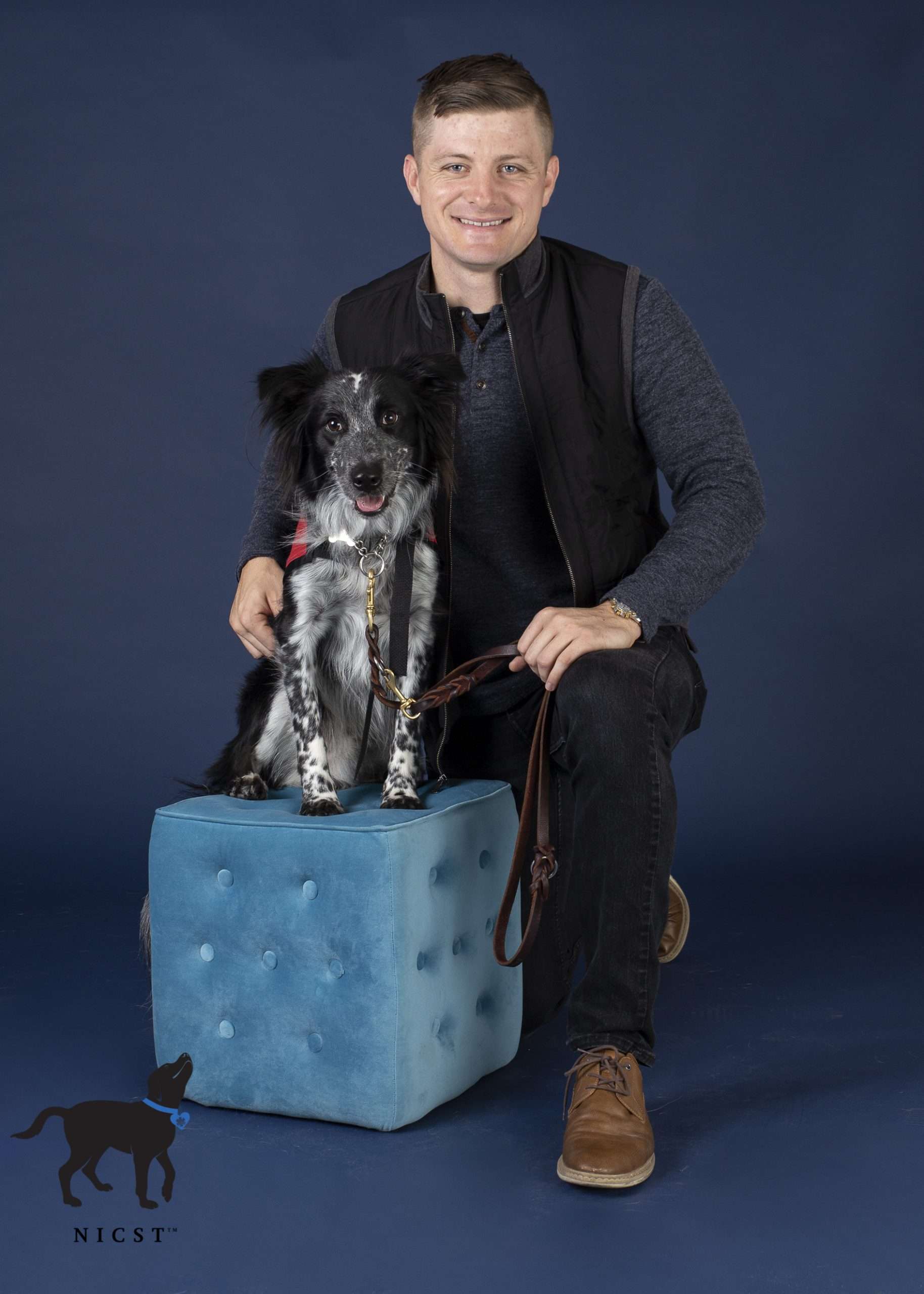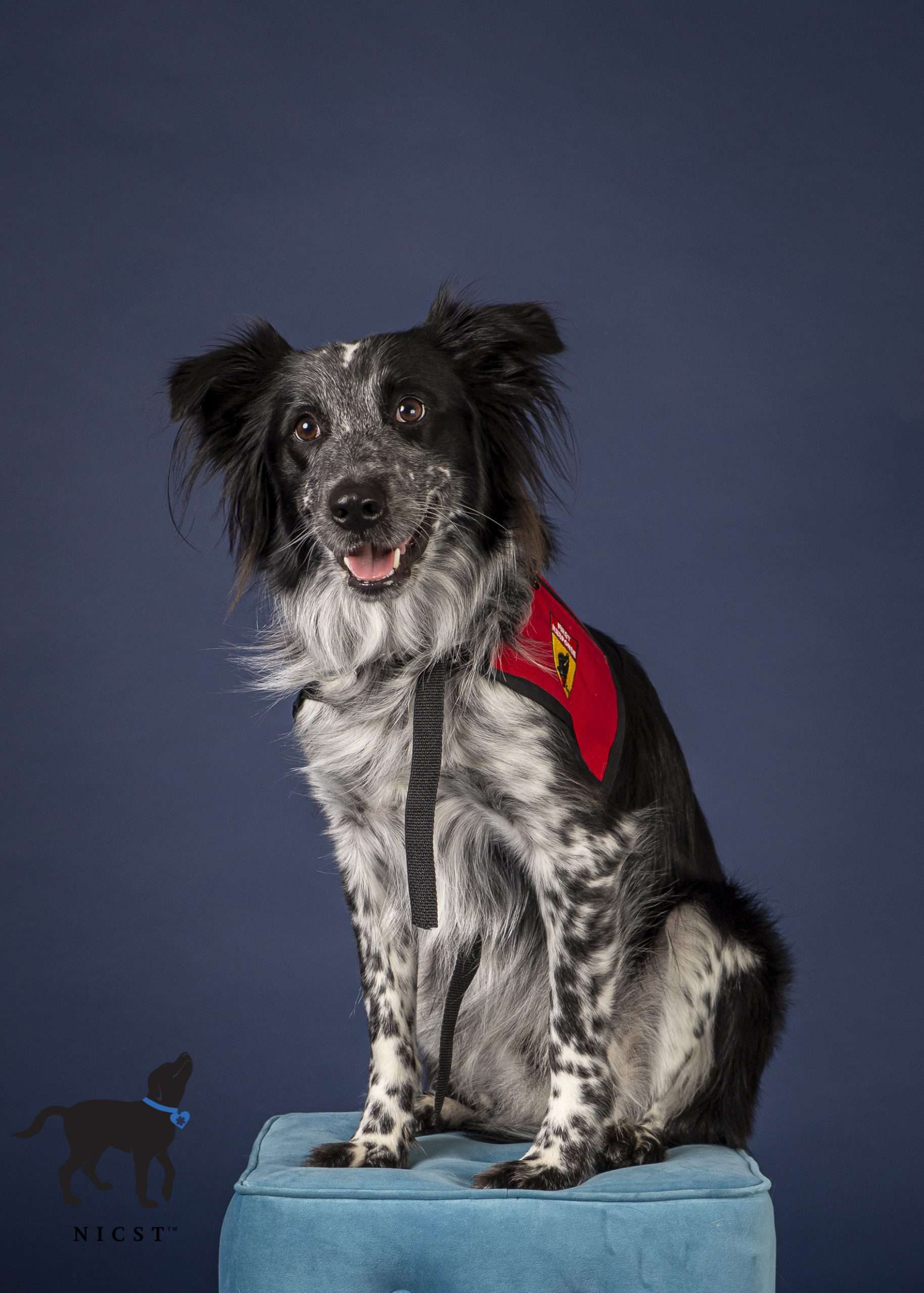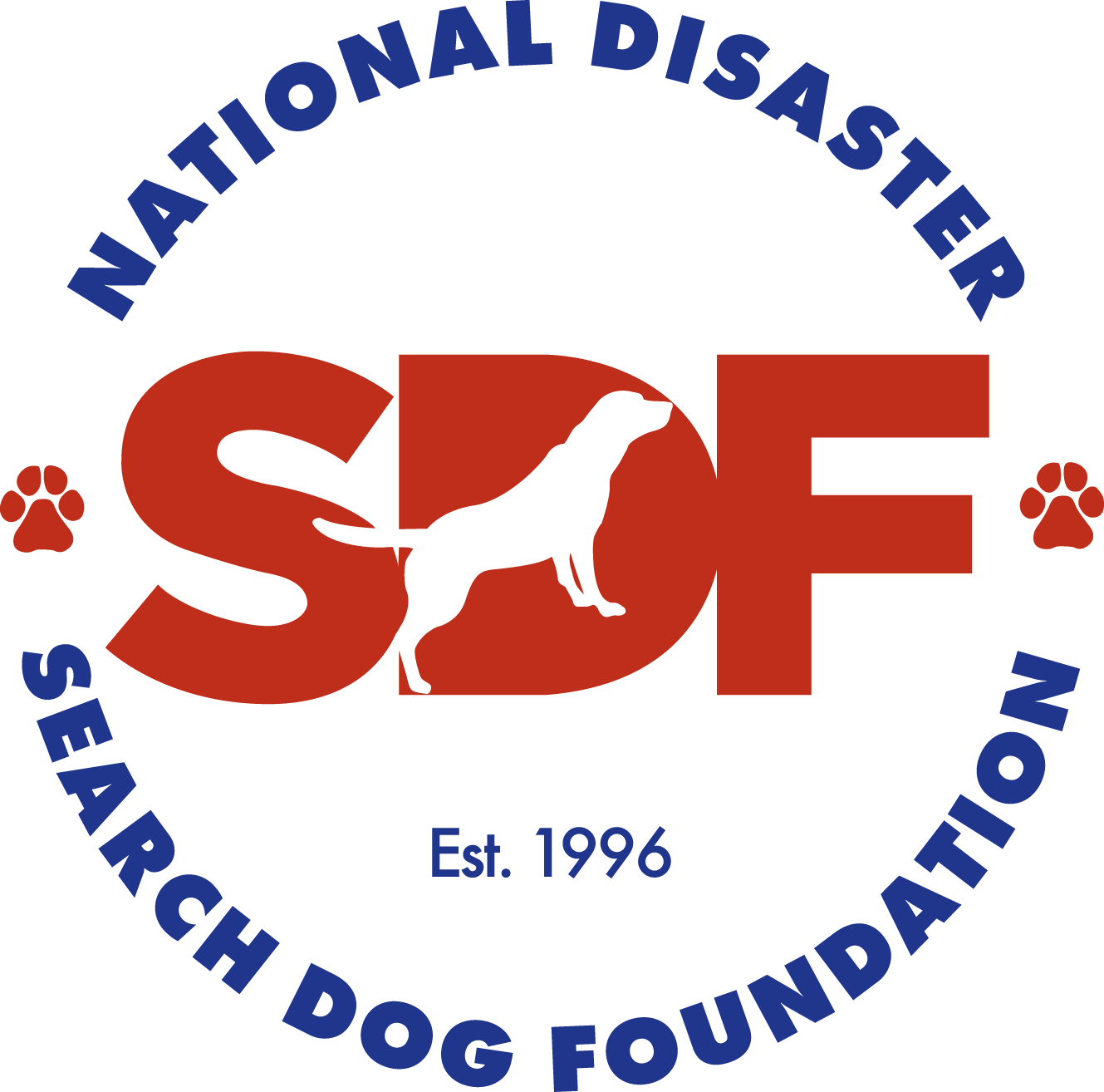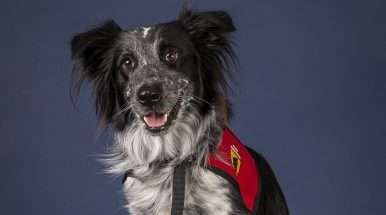
Ryan, a handsome border collie mix, was found roaming the streets in Salt Lake City, UT, and taken to South Salt Lake Animal Services. When no owner came to claim him, he became available for public adoption. Noting his high energy and strong toy drive, shelter staff reached out to SDF to see if he might make a good search dog candidate. After performing a few preliminary assessments for our SDF recruiter, we believed this lively young dog had enough potential to enter our search program! He caught a ride to our California campus with a volunteer pilot from Angel Flight West and was given the name “Ryan” in honor of Ryan Osler, a Ventura County firefighter who lost his life fighting the Canyon Fire near Lompoc, CA in 2016.
Once at our National Training Center, Ryan showed promise in foundational skills, but unfortunately, he was hyper-aware of his environment, which distracted him from search work and prevented him from moving on as a search candidate. Ryan had a great temperament otherwise and loved people, so he transitioned into our Lifetime Care program – our safety net promise to all search candidates that even if they don’t complete the search program, we’ll find them a fulfilling career or loving family home.


Considering Ryan’s skill set, our SDF Lifetime Care Coordinator believed he would excel in a career at the National Institute of Canine Service and Training (NICST) in Concord, CA. NICST has several programs dedicated to training highly-skilled dogs in diabetes detection, cancer detection, and as service dogs and service buddy dogs for first responders with PTSD. Ryan soon bid goodbye to his friends at SDF and headed to NICST to train as a medical scent work recruit for the organization’s cancer detection arm.
Like search work, it takes a unique combination of skills, personality, and aptitude for dogs to succeed at this type of medical scent work. After seeing Ryan in action, NICST founder Mark Reufenacht was optimistic that the spunky pup possessed this winning combination. He took Ryan to live in his own home while Ryan received training to be a scent detection dog.
Once part of Mark’s household, Ryan proceeded to win everyone over with his charm – his trainers, volunteers at the training center, and even Mark’s resident Labrador, who became Ryan’s best canine buddy. Ryan won over one of Mark’s neighbors so completely that she kept an extra set of Ryan’s things at her house so they could have slumber parties!
In training, Ryan’s scent work was progressing, too. He enjoyed working scent problems, and trainers were delighted with Ryan’s “off switch” — the relaxed, quiet behavior working dogs must maintain in a home environment or when not “working.” Ryan was so good at on/off that he figured out on his own to be quiet when Mark was talking on the phone – smart pup!
All seemed to be going well with Ryan’s training, and he would have continued on his path to becoming a cancer detection dog except for one thing: Ryan loved people too much. In scent work, it’s sometimes necessary for the canine to separate from his handler to trace an odor. This did not work for Ryan. He couldn’t stand to be away from his handler – even if it was only temporary and even if it was only a matter of ten feet. Ryan is very much a “Velcro” dog and would only be happy in a role that allowed him to bond closely with, and be closely near, a human.
Luckily for all involved, NICST has the same philosophy as SDF when it comes to our canine trainees: keep trying until you find the right fit. After politely declining the job in scent detection, Ryan pivoted careers once again. He joined NICST’s non-profit service dog organization, First Responder Canine (FRK9), which trains dogs to become assistant companions to first responders who have incurred life-changing injuries while serving in their jobs.
James Franklin, a young police officer living with PTSD, had been volunteering at NICST and, like all who encountered Ryan, was one hundred percent a Ryan fan. As James watched Ryan go through scent training, he remembers thinking, “Aww man, what if I got a dog like that?!” As luck would have it, Ryan became available as a service dog trainee soon after. He was paired with James, and it was an instant match.
For the next six months, Ryan and James trained together and graduated from the First Responder Canine program in November 2021. Ryan even certified as an official service dog under the Americans with Disabilities Act. As it turns out, the same traits that made Ryan less than ideal in search work and scent detection made him an excellent companion service dog. His desire to “stick” exclusively to his person grants him awareness of his human partner’s changing moods, and his vigilance in crowded environments means he can stay watchful so his human can relax.
“Because of the job, I’m always thinking, like, where is the exit? Where are people at?” James says. “And Ryan does the same thing! So he sits next to me, and he’s always looking at who’s around me, and he takes care of me.”
We are so grateful to like-minded partners like Mark Ruefenacht, who put the best interests of our canine charges first and helped SDF fulfill its Lifetime Care promise to Ryan. Many points in Ryan’s story could have derailed his happy ending. If shelter staff hadn’t recognized Ryan’s potential and reached out to SDF; if Mark had given up because Ryan wasn’t perfect at scent detection; if Ryan didn’t have the safety net of caring SDF staff, trainers, and donors advocating for him and supporting him all along his journey, Ryan would not have gone on to find his true calling: helping James when he needed him most.
Reflecting on their extraordinary pairing, James credits Ryan for improving his mental health and his life. “I can’t put into words how helpful Ryan is to me,” James says. “Ryan saves my life every day.”






